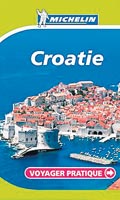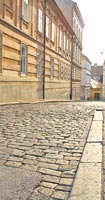
Zagreb: City of provincial charm
Tourists in a hurry to reach the Croatian coast rarely stop off in Zagreb, yet this capital is worth a great deal more than it is given credit for. Indeed, the area of the city south of the Save River, with its miles of grey buildings, is not very appealing. But the two hills in the historic heart of Zagreb have retained their pleasant provincial charm. Life seems to go on peacefully here to the jingling sound of the tramway. Traveller's tips Touring Zagreb, with its relatively small city centre, is very pleasant; and walking up Gradec Hill is a good opportunity to get some exercise. Furthermore, driving here can be complicated due to scarce parking places and the traffic full of tramways and cars - difficult for the uninitiated. The Zagreb card gives you unrestricted use of all public transportation for 72 hours (including the cable car to the national park north of Zagreb) as well as a 50% discount on museum tickets. A bit of history The city's history mainly involves two rival hills. The first recorded history dates back to 1094 when the bishop's diocese was created. The canons built a cathedral on Kaptol hill, while a town grew up on Gradec, the hill across from it. The rivalry between the two towns frequently culminated in clashes, which ended when the Ottoman threat forced the two hills to become allies.
After an earthquake which destroyed a large area of the city (1880), the town was entirely rebuilt, mainly by Austrian architects. It was adorned with majestic façades (neo-Romanesque to neo-Classical). The First World War brought an end to the Belle Epoque. In 1918, Croatia was part of the brand new Yugoslavia, but Belgrade was named capital and Zagreb continued to play second fiddle. In the 1950s-60s, the rural exodus and increasing industrialisation drove many Croatians to settle in Zagreb. To deal with this influx of people, Novi Zagreb (New Zagreb) was created south of the Save, and the huge blocks of buildings suddenly appeared on the landscape. When Croatia gained its independence in 1991, Zagreb became the capital of the new state. During the war in Yugoslavia, the presidential palace was the only building in the city bombed. The war and displaced populations finally turned Zagreb into a big city of 900,000 inhabitants, but it has retained its provincial atmosphere. Sightseeing Kaptol Hill Kaptol, which is also the name of a street and of the square where the cathedral stands, is the lower of the town's two hills. The bishop's see has been here since the 11C. Kaptol Street is the main artery of the quarter. It contains the old canons' houses, some of which are remarkable. Cathedral Zagreb Cathedral has a long history and has survived many perils. Construction began in the 13C on the remains of a Romanesque cathedral destroyed by the Tatars. It was built in the Gothic style. In the 15C the cathedral was surrounded by ramparts and towers to defend it from Ottoman invasions.
Some of the towers can still be seen on the southern side of the building. The interior of Zagreb Cathedral has been rather well preserved from the hazards of history. It still contains the original (13C) sacristy, decorated with delicate frescoes. Dolac Market From cathedral square you can't miss the shouts of the vendors and old women wearing black scarves at the city's main market: the town's big popular market, supplied by small local producers, is in full swing every morning. Flowers, fruits, vegetables, crafts, honey and olive oil are spread out under large red parasols. Tkalciceva Street Go down a few steps : this pedestrian street, lined with low-lying houses painted in warm colours, is the liveliest in the city thanks to its many restaurants, cafés and above all its terraces vying to provide the biggest and most comfortable armchairs. Museum of the City of Zagreb This museum, housed in the former Convent of the Poor Clares, recounts the history of the city of Zagreb from its origins. Starting with the rivalry between the two hills and including the war of independence from 1991-1995, it is an essential part of your exploration of the capital. Open Tue-Fri 10 am-6pm, Sat-Sun 10am-1pm, 20 kn. Free guided tours at 11am on weekends. Ivan Mestrovic Foundation The works of the great sculptor, an admirer of Rodin, are presented here in a magnificent 17C house where the artist had his studio from 1922 to 1942, before going to the United States. It has a beautiful garden and patio decorated with furniture designed by the artist. Open Tue-Fri 10am-6pm, Sat-Sun 10am-2pm, tickets 20kn. St. Catherine's Church This church built by the Jesuits is as discreet on the outside as it is rich inside. The walls and vault are covered in pink and white stucco, and the chancel is decorated with a splendid trompe-l'œil. Open daily 10 a.m.-1p.m. and 5p.m.-7p.m. Lower town The cemetery. A tour of Zagreb wouldn't be complete without seeing Mirogoj Cemetery. Peaceful and majestic are the two most fitting adjectives for this monumental cemetery, in existence since 1876. As you stroll down the lanes, the history of this land is recreated before your eyes, with Stars of David, Catholic crosses and Cyrillic characters on the tombs, as well as white Muslim tombstones.
|
|| Front
Page | News | Editorial | Columns | Sports | Plus | Financial
Times | International | Mirror | TV
Times | Funday
Times || |
| |
Copyright
2007 Wijeya
Newspapers Ltd.Colombo. Sri Lanka. |


 Where to stay
Where to stay